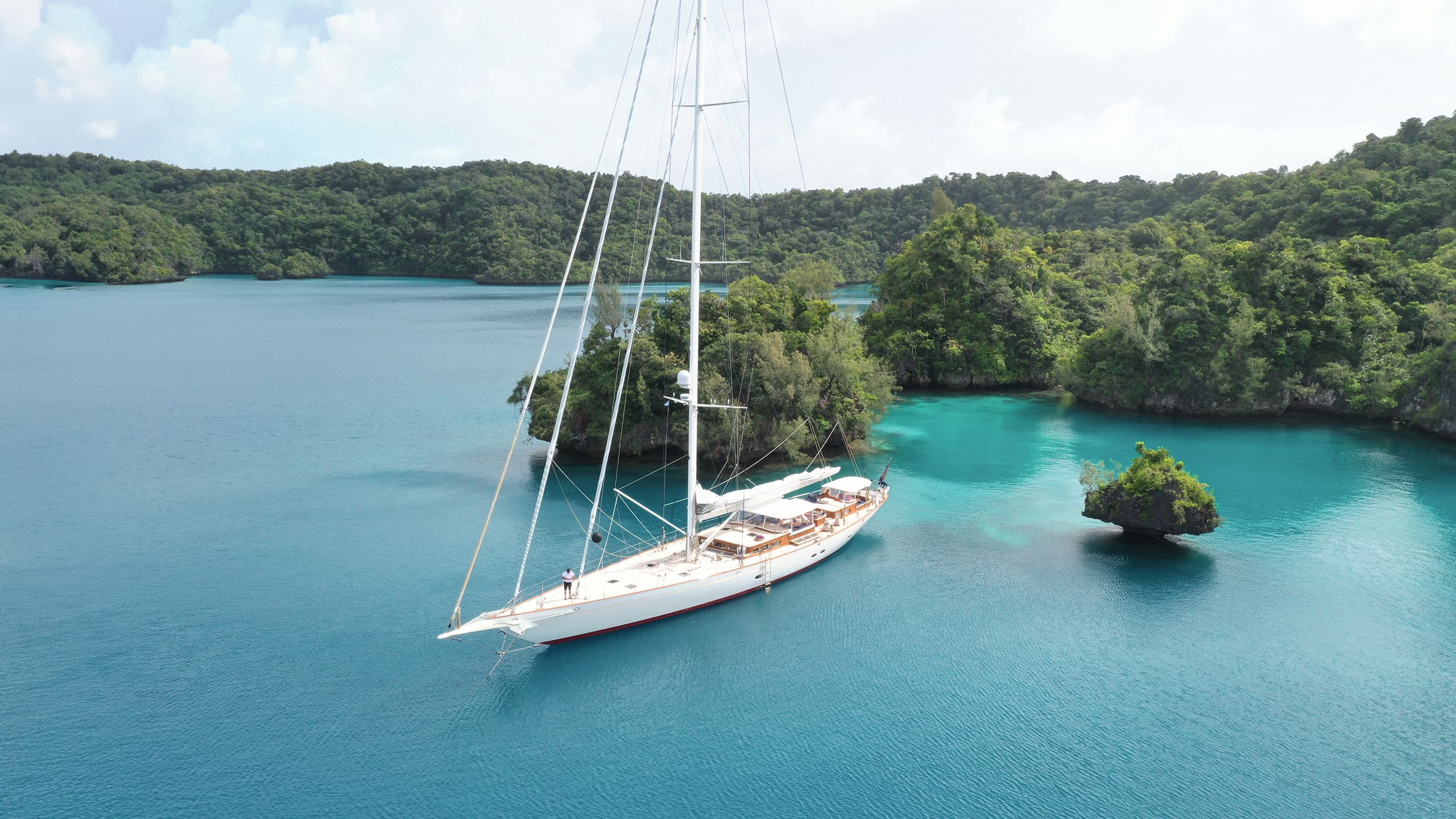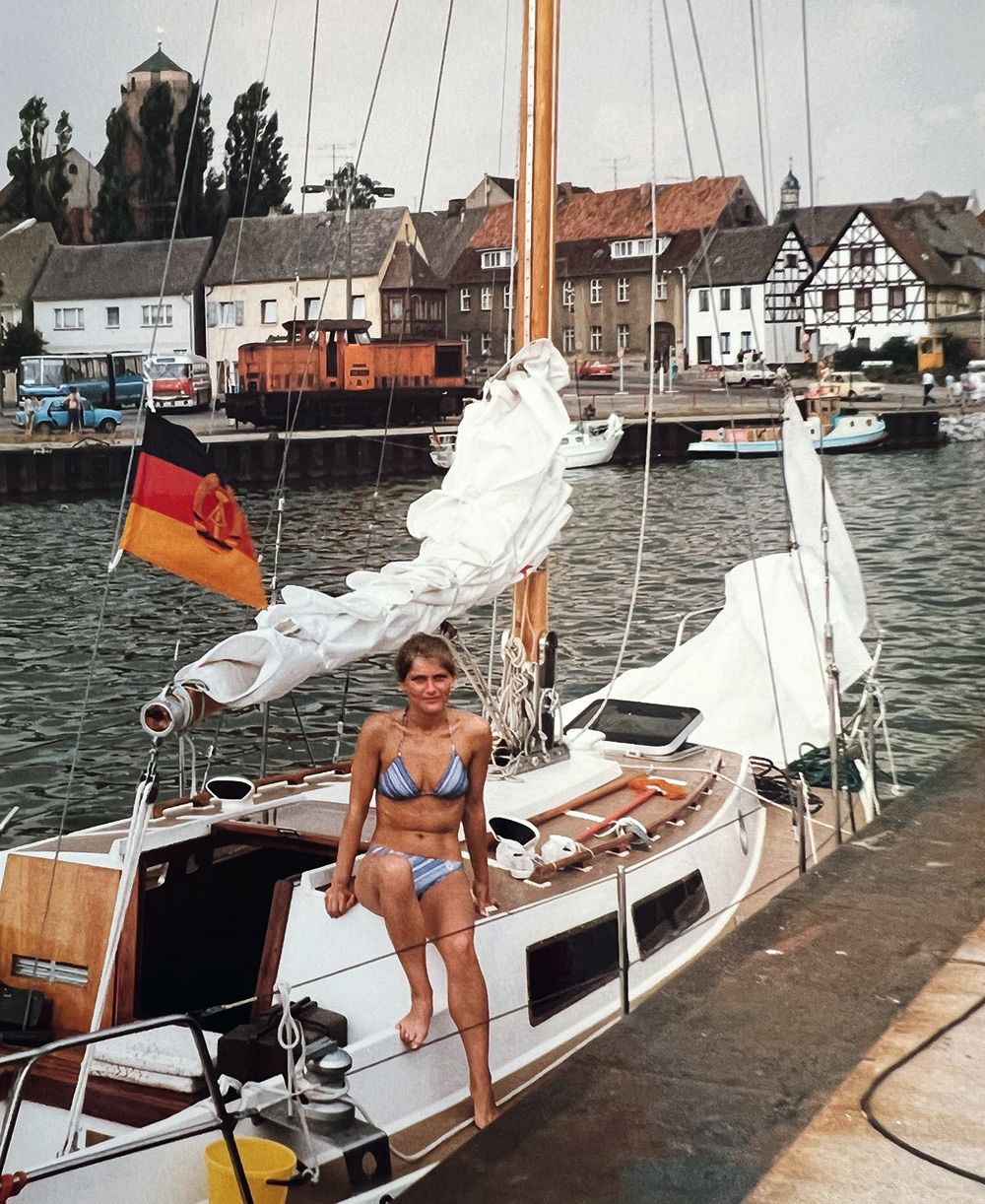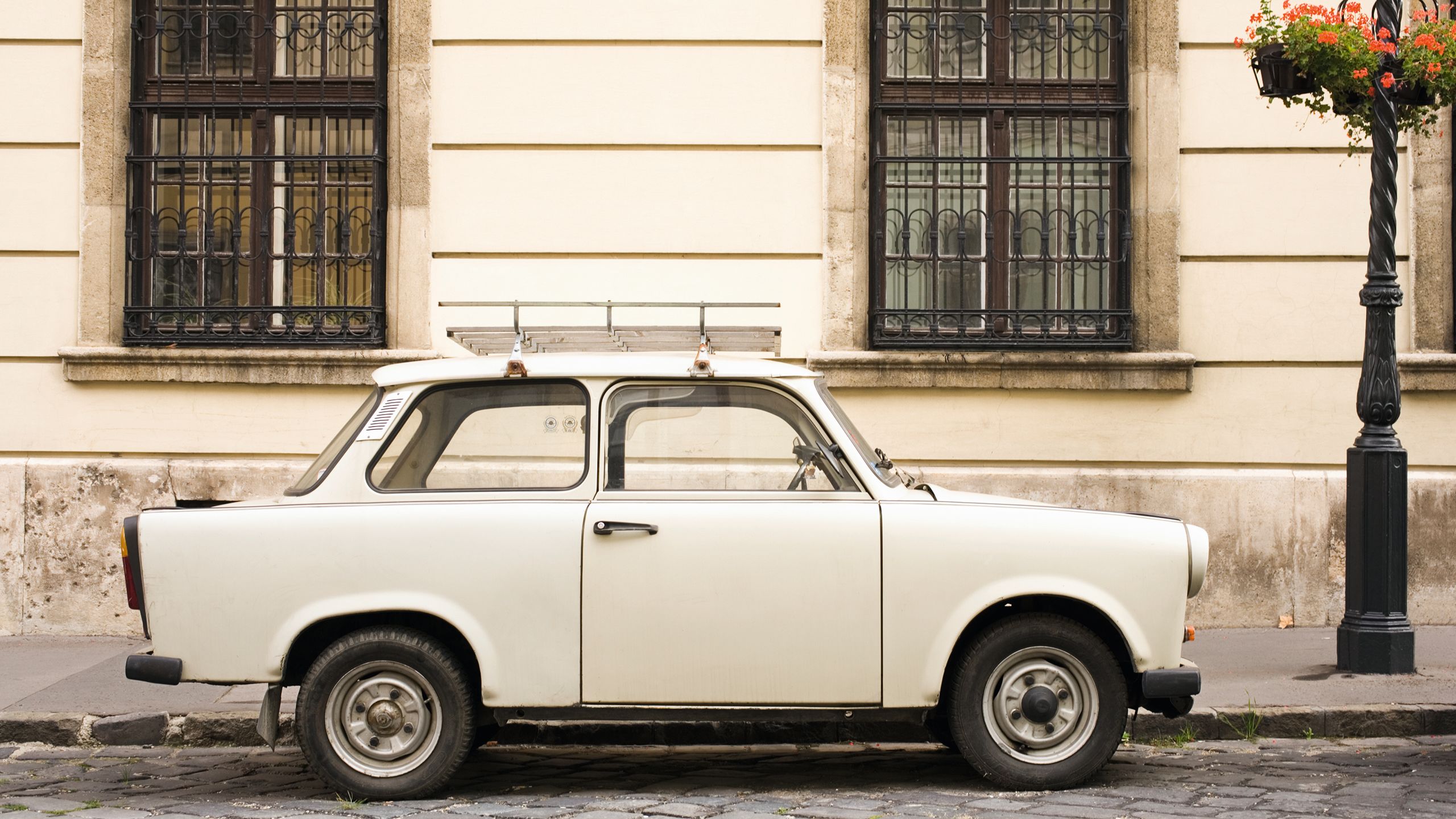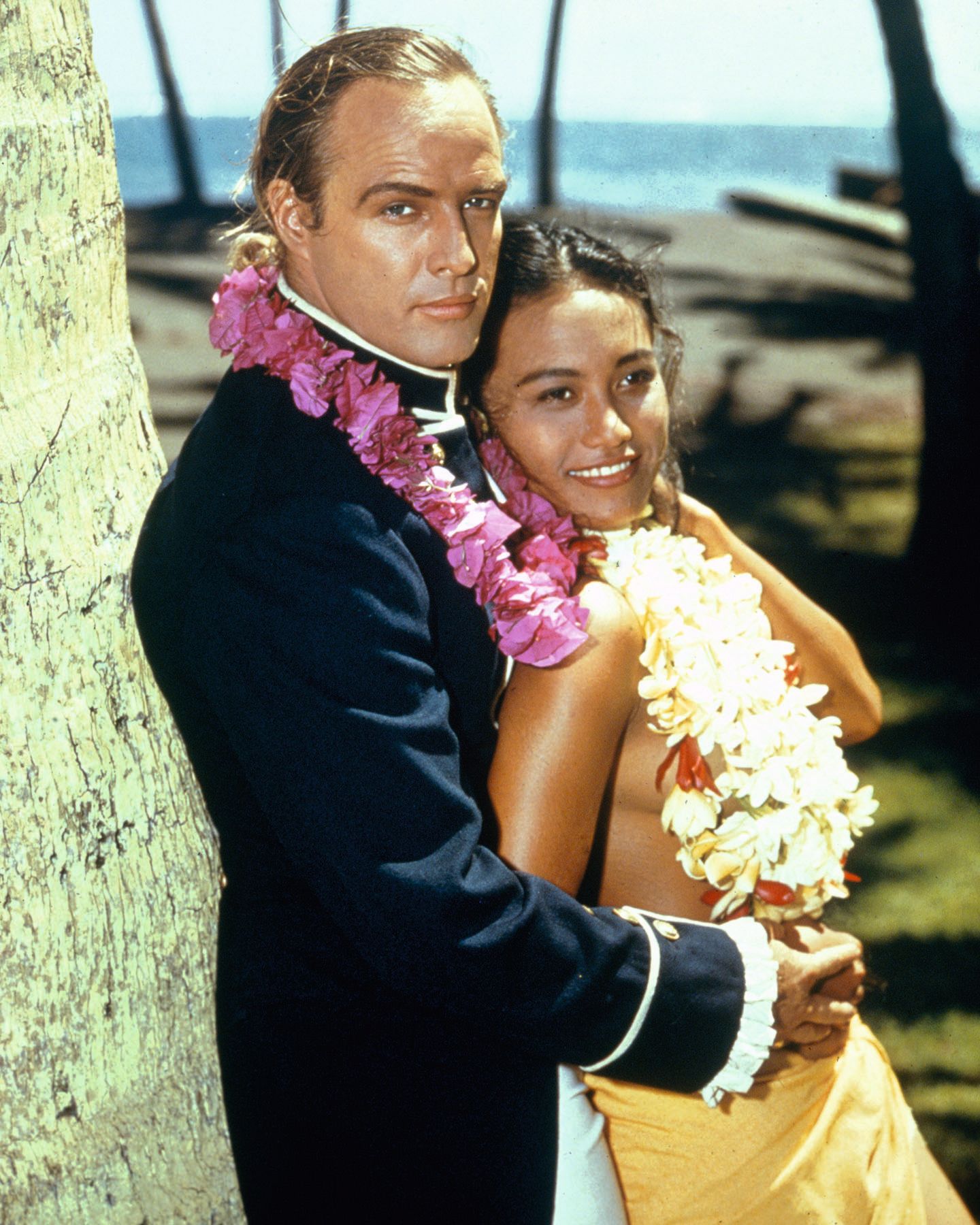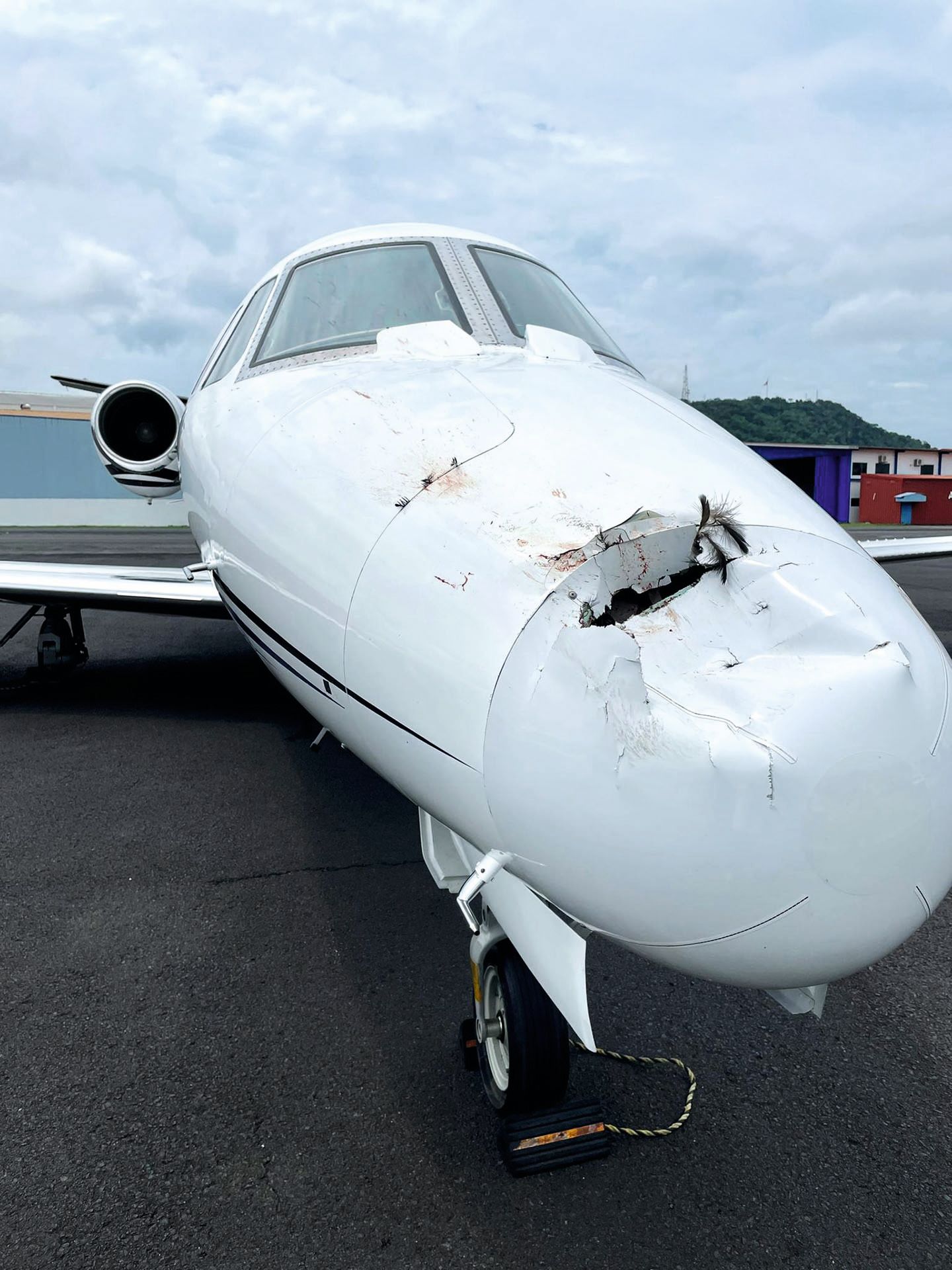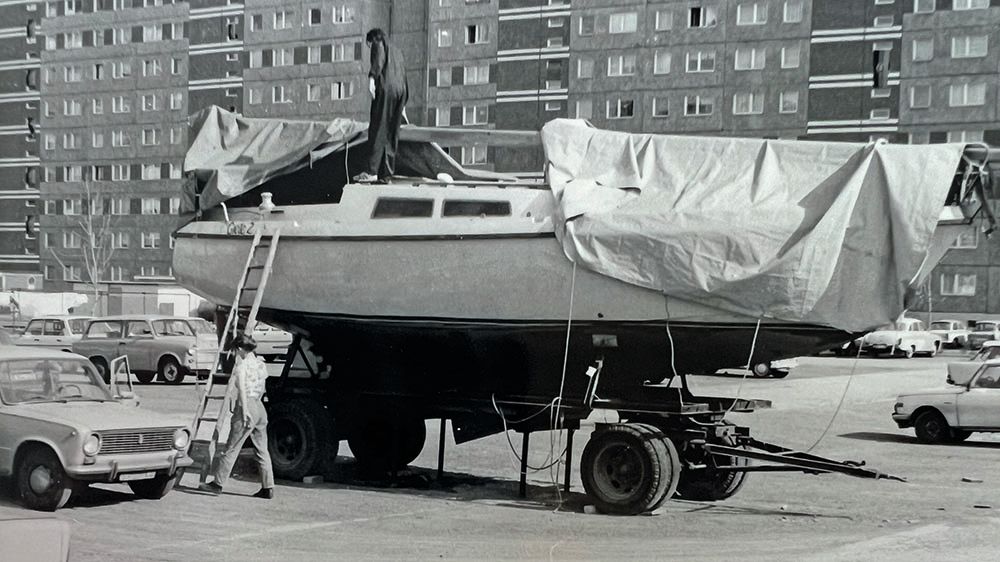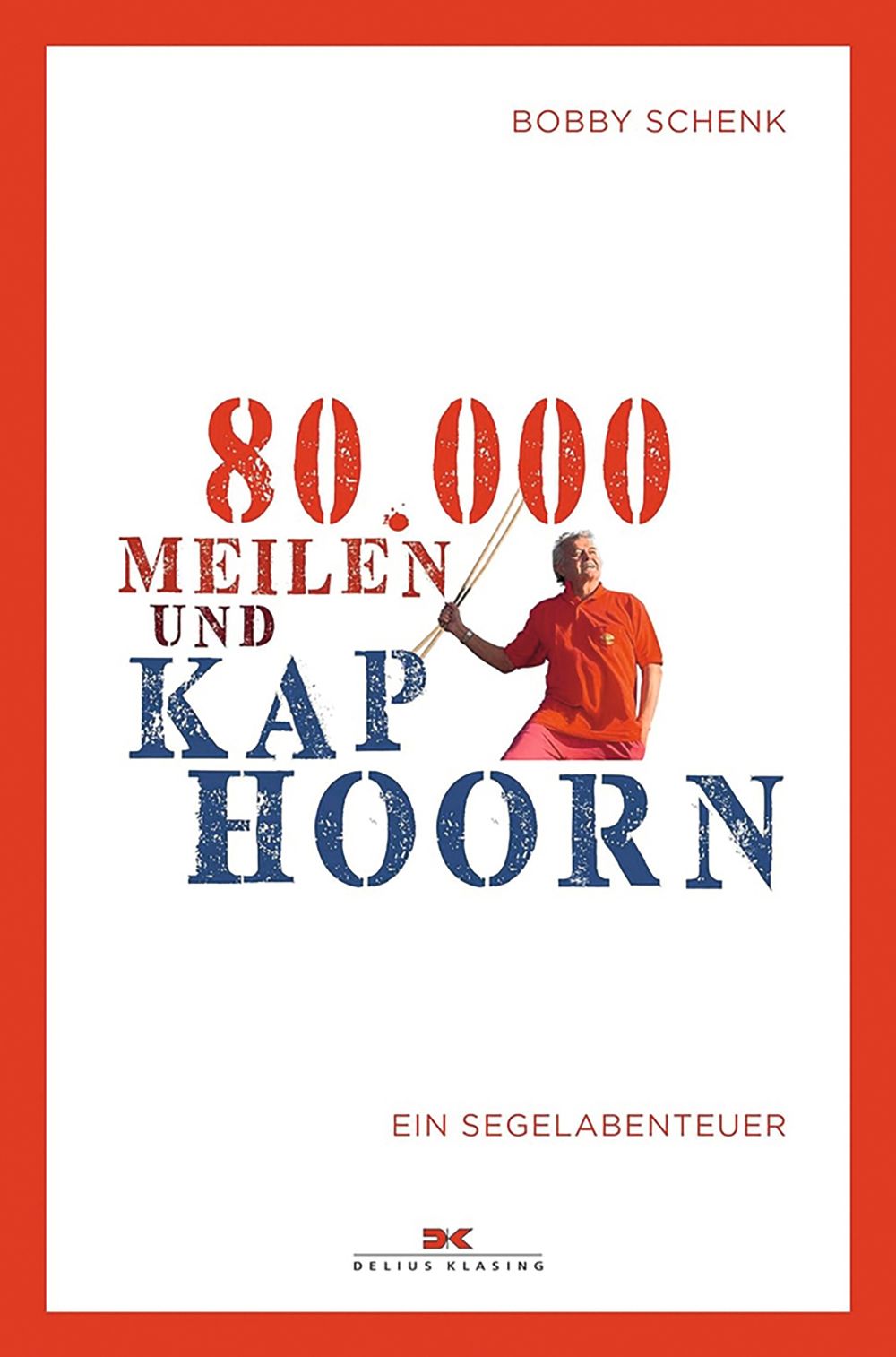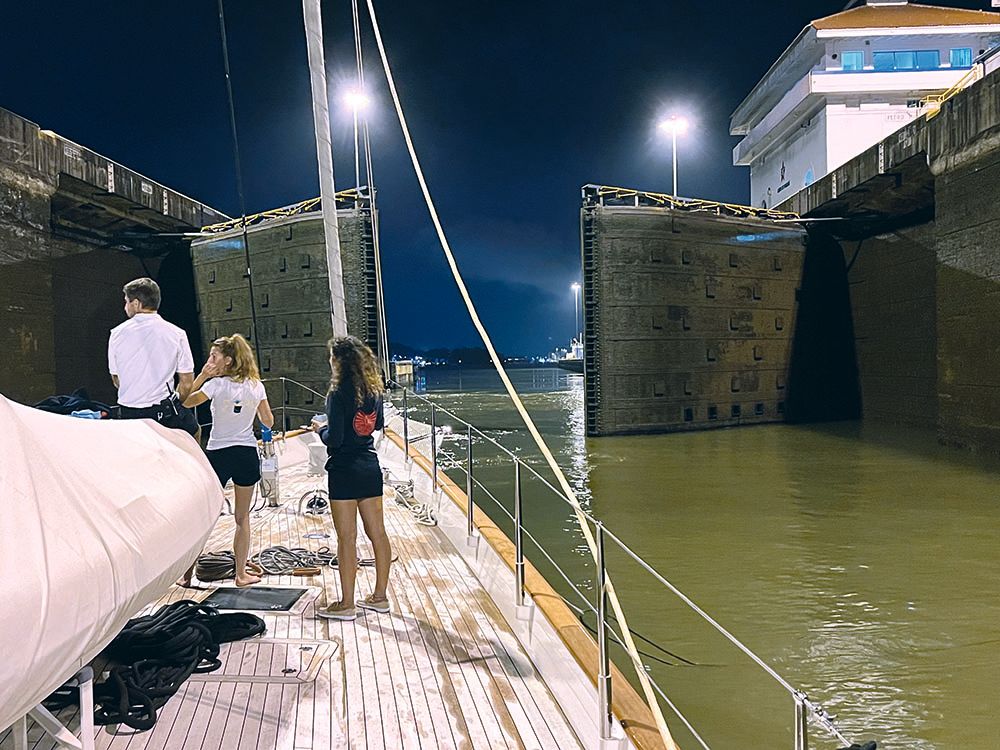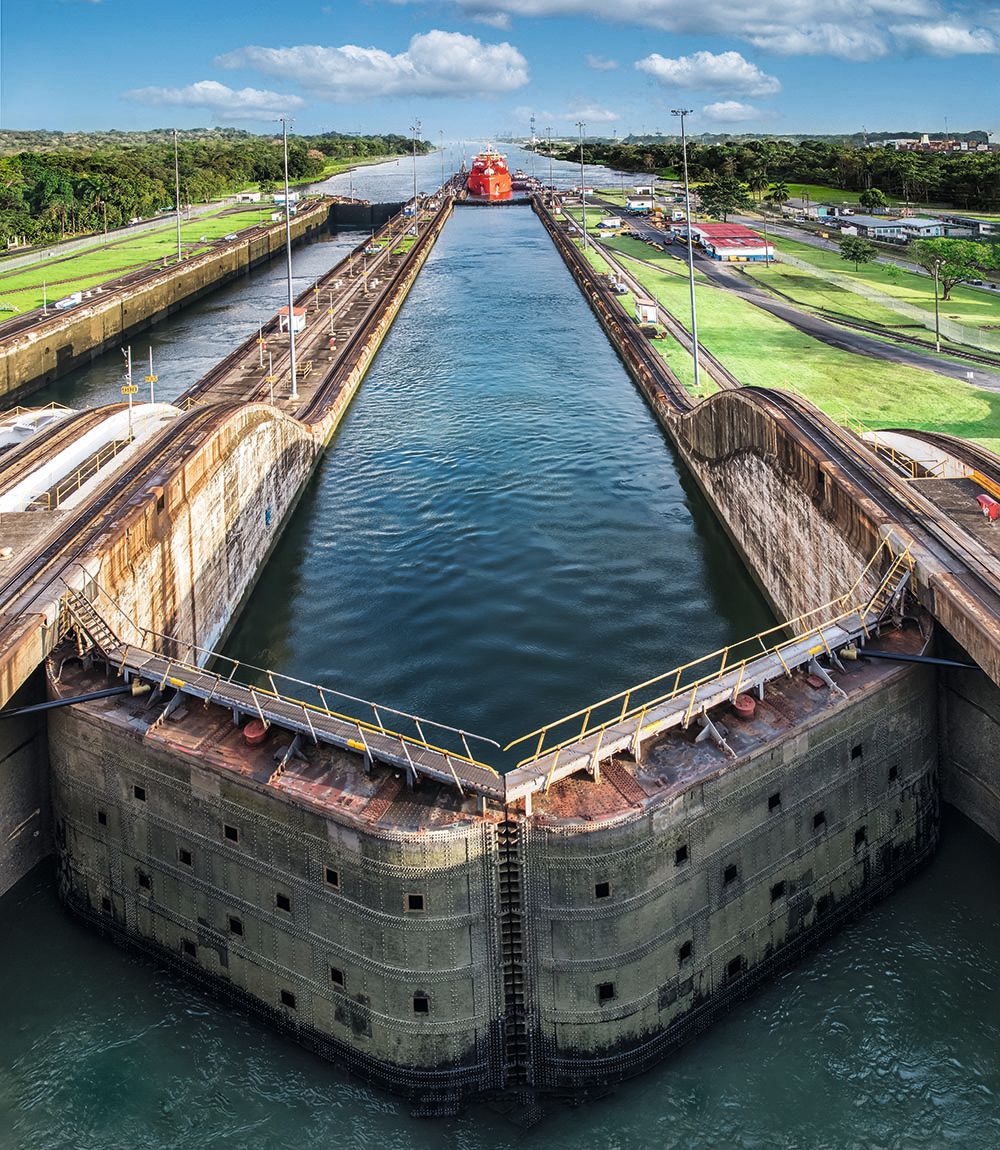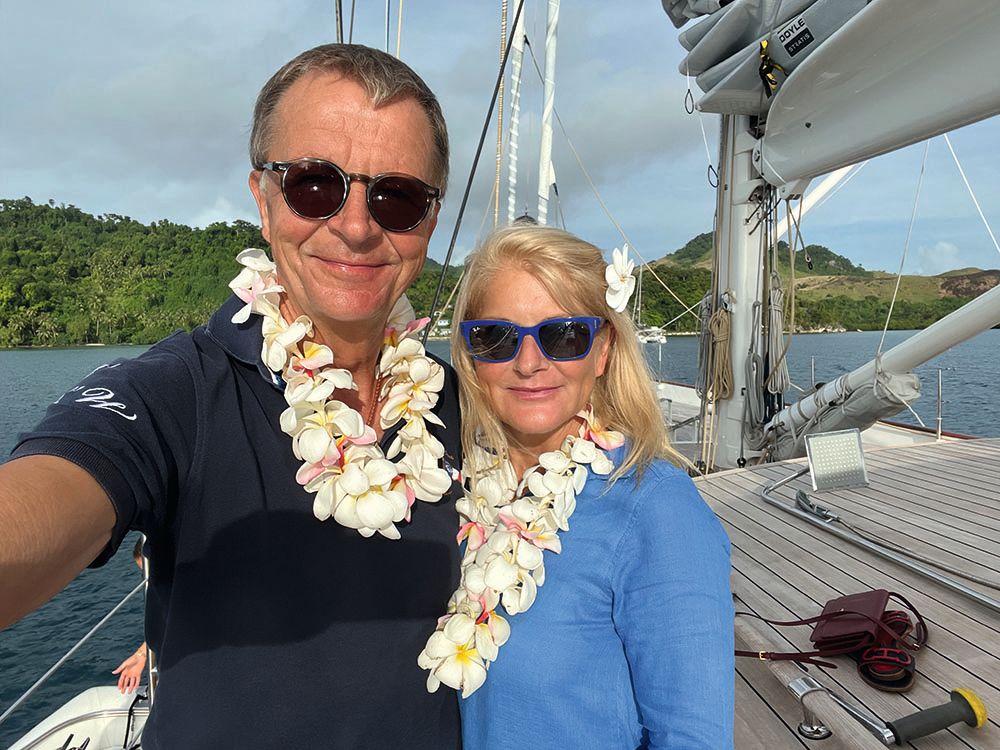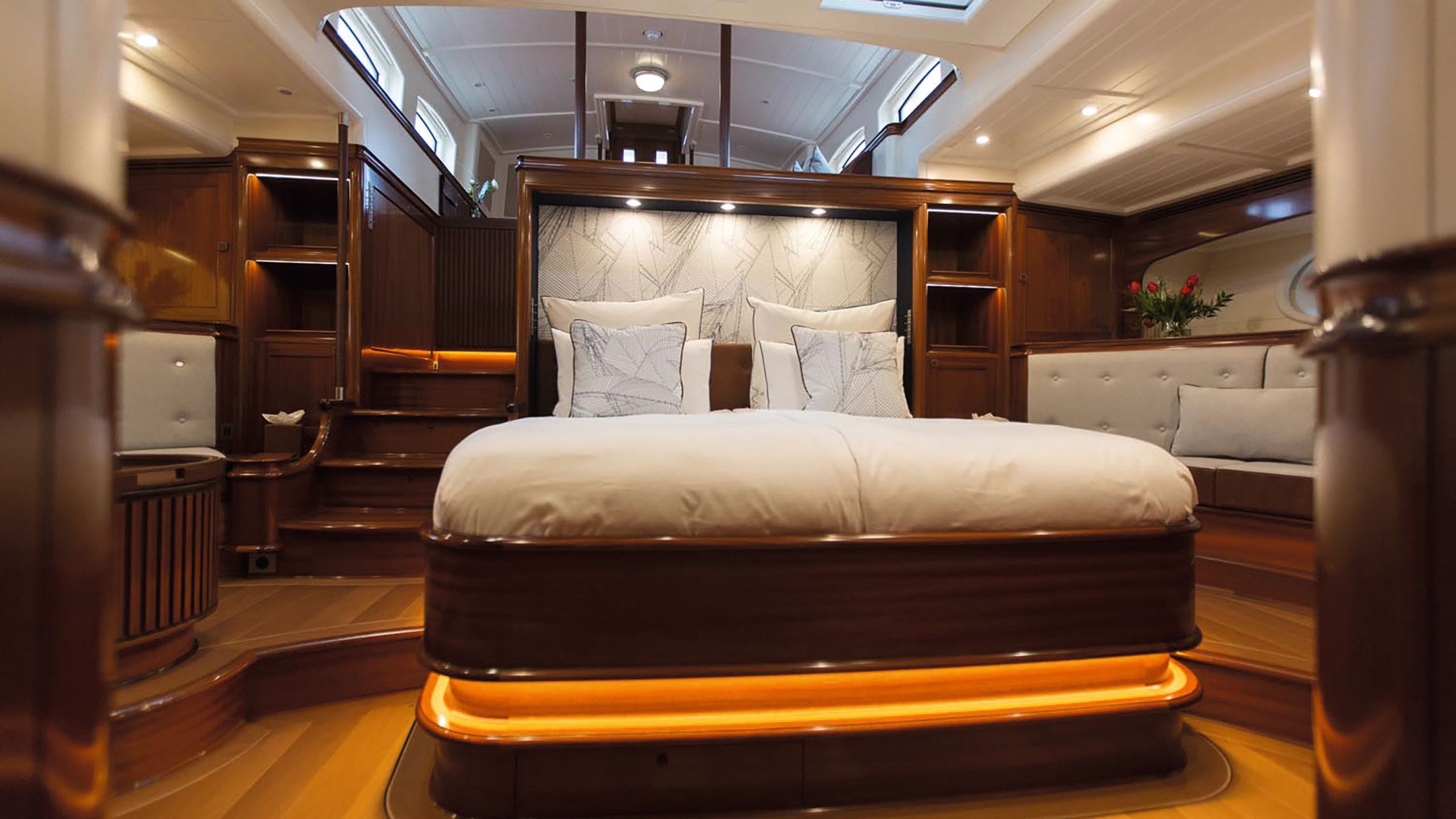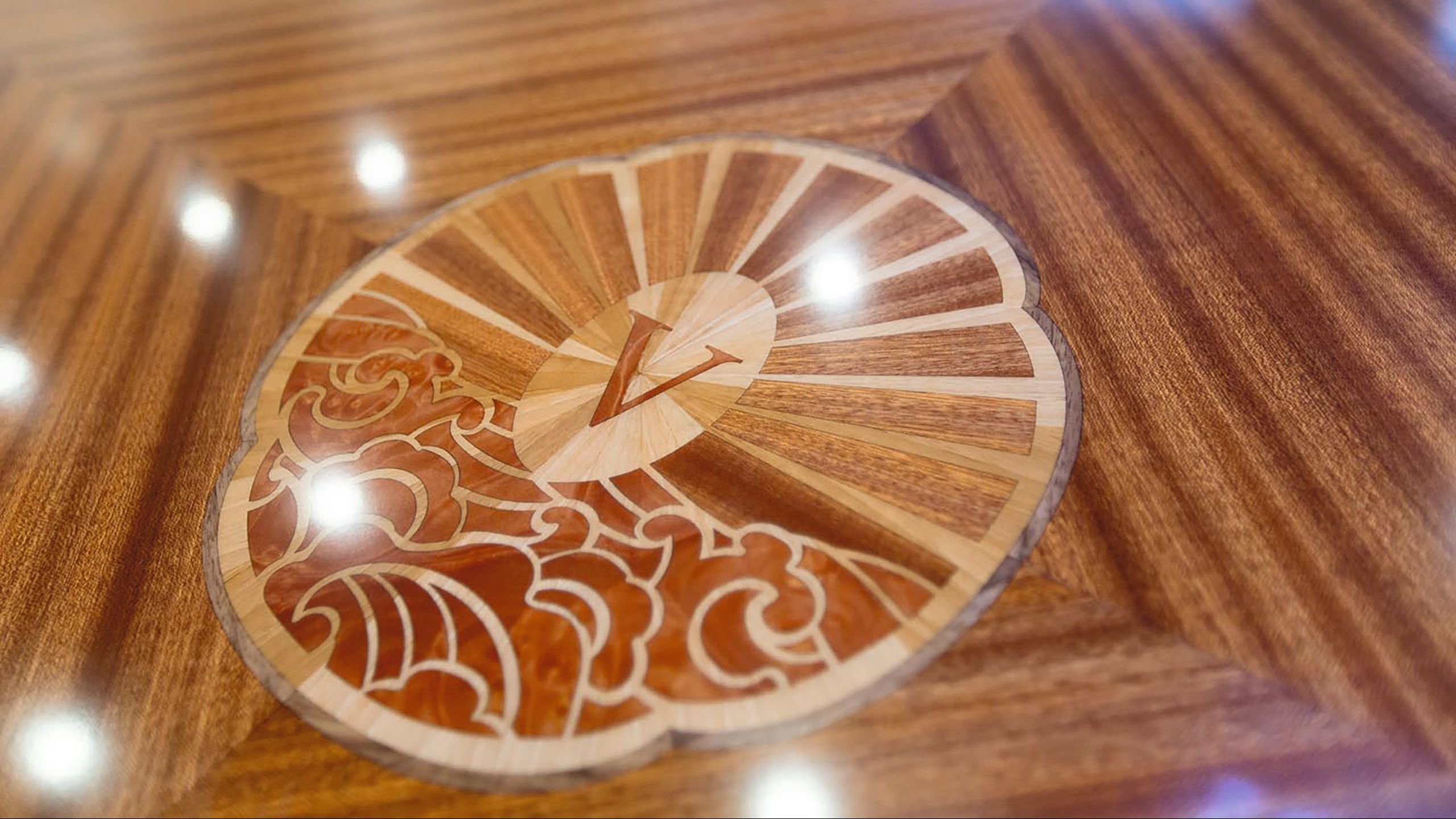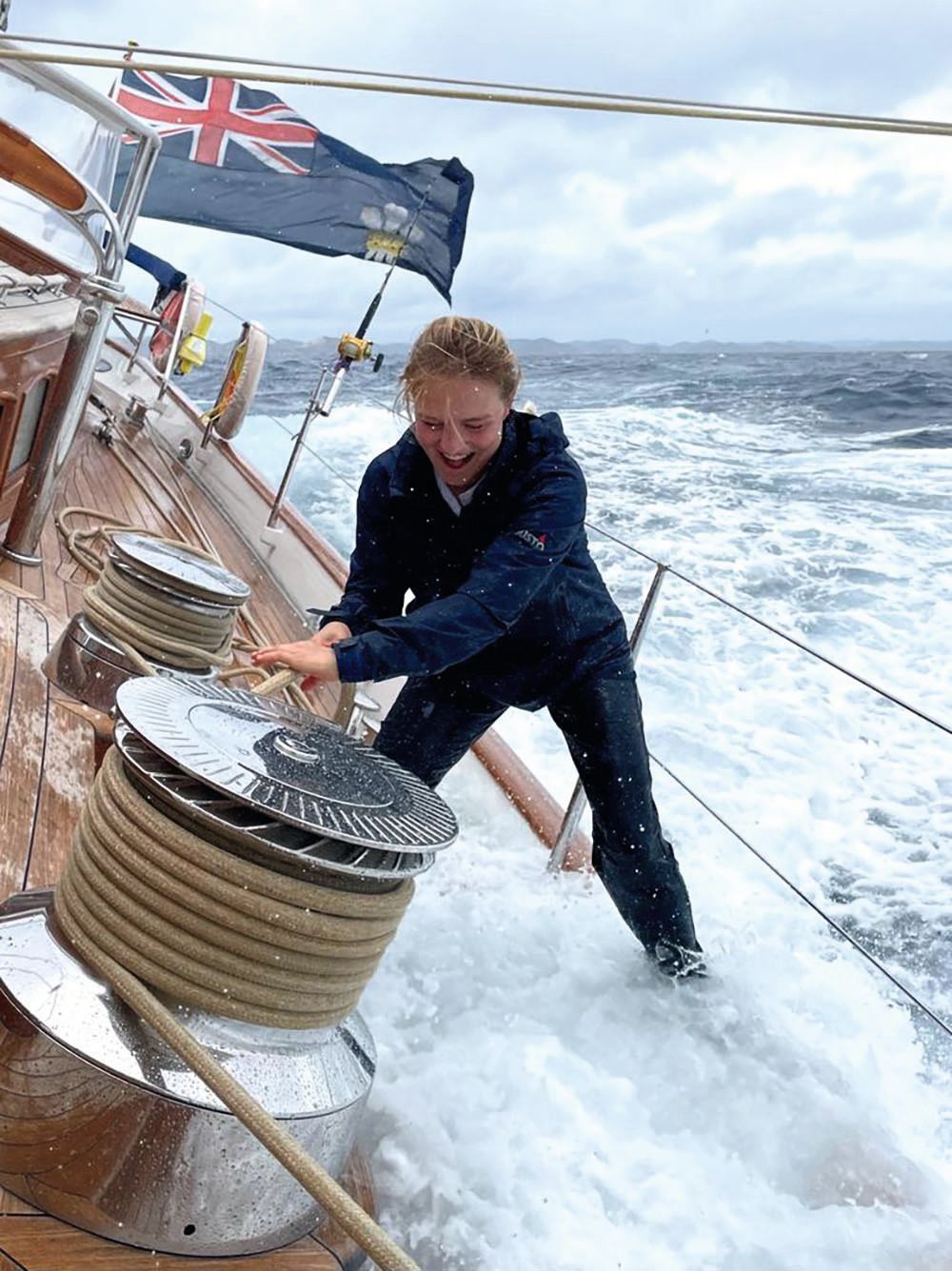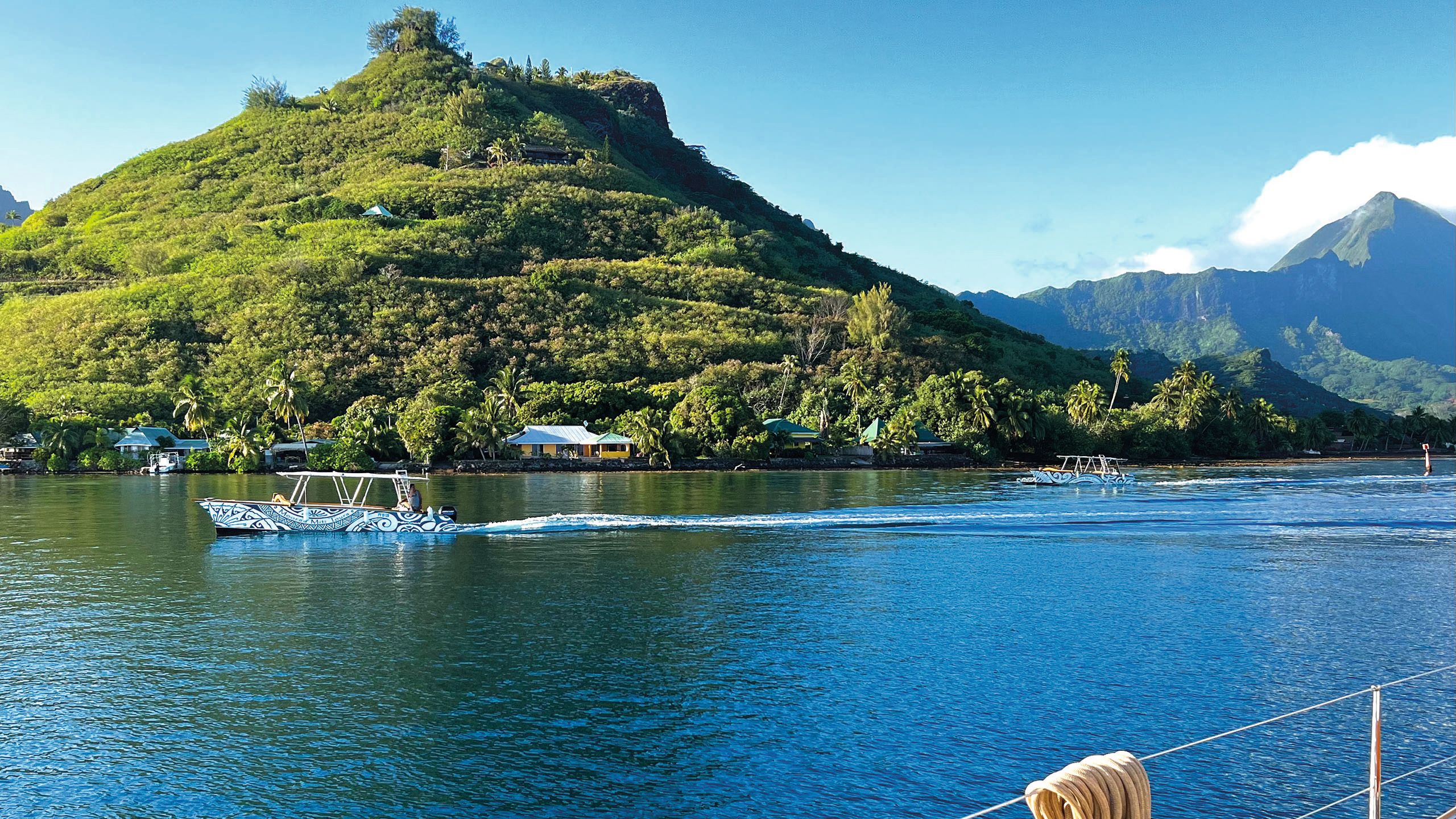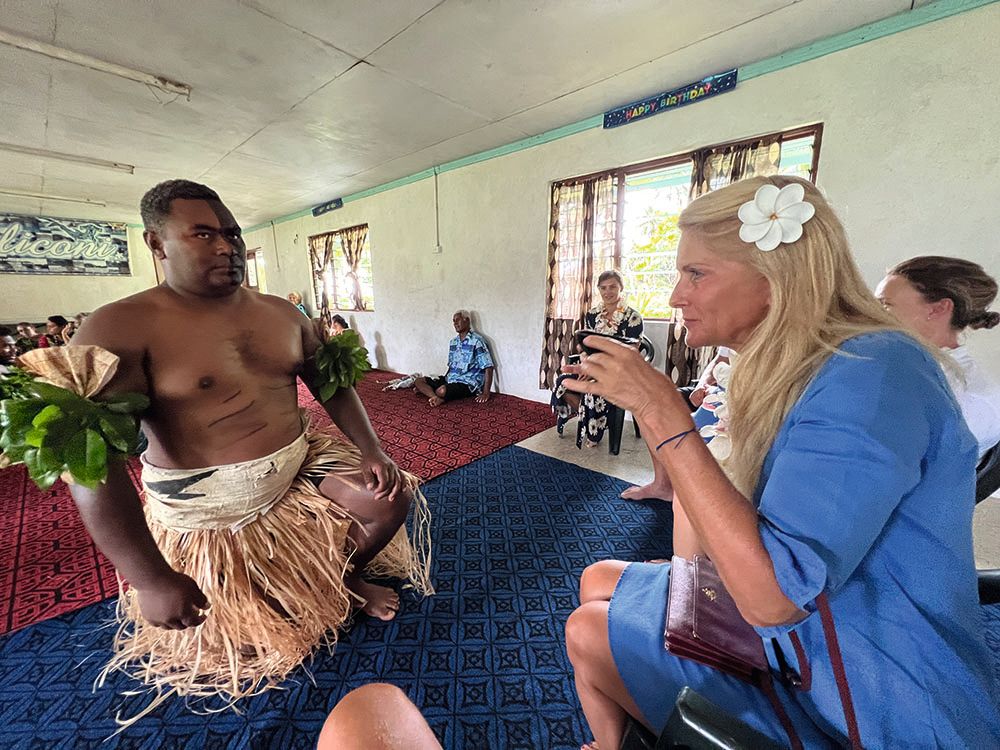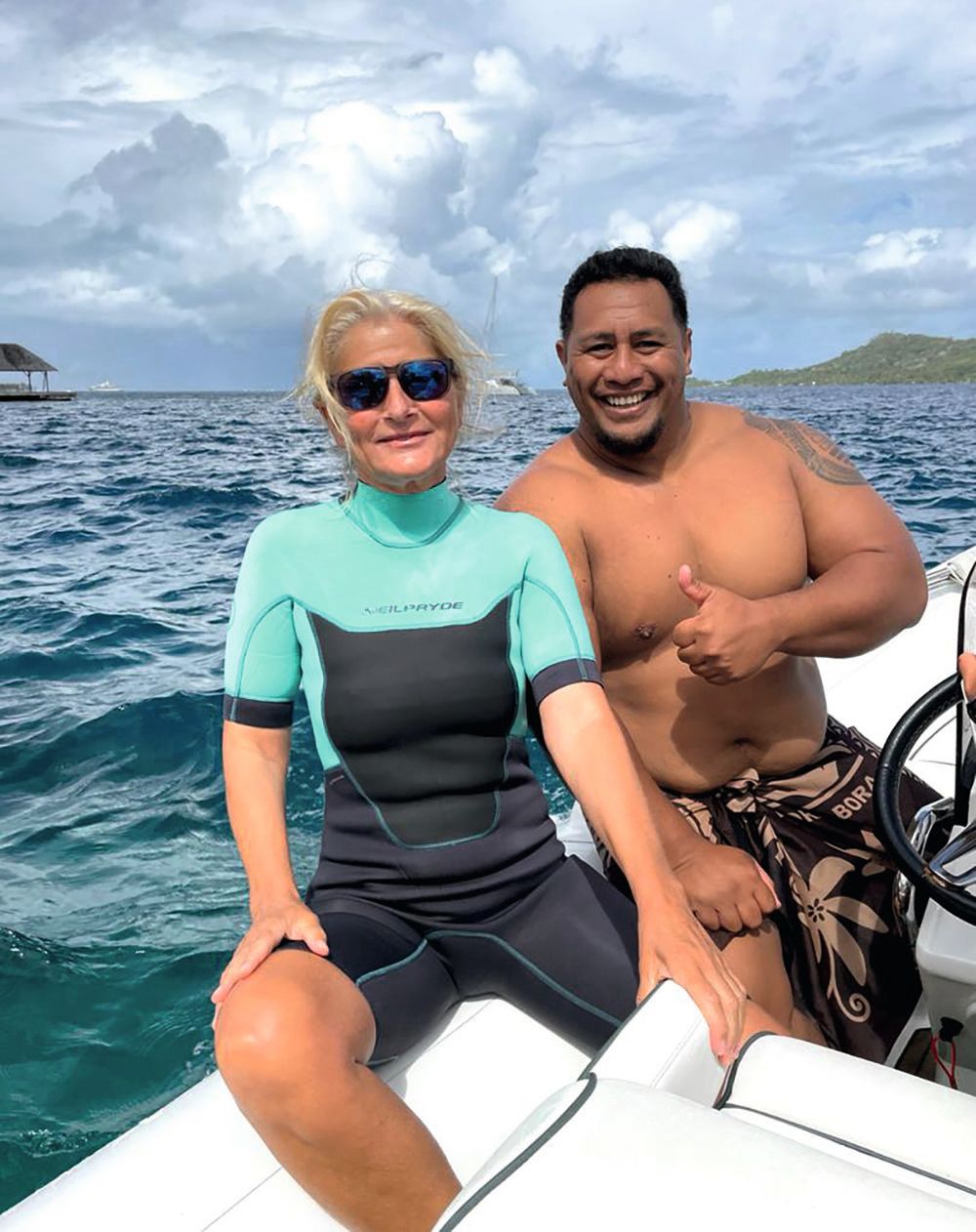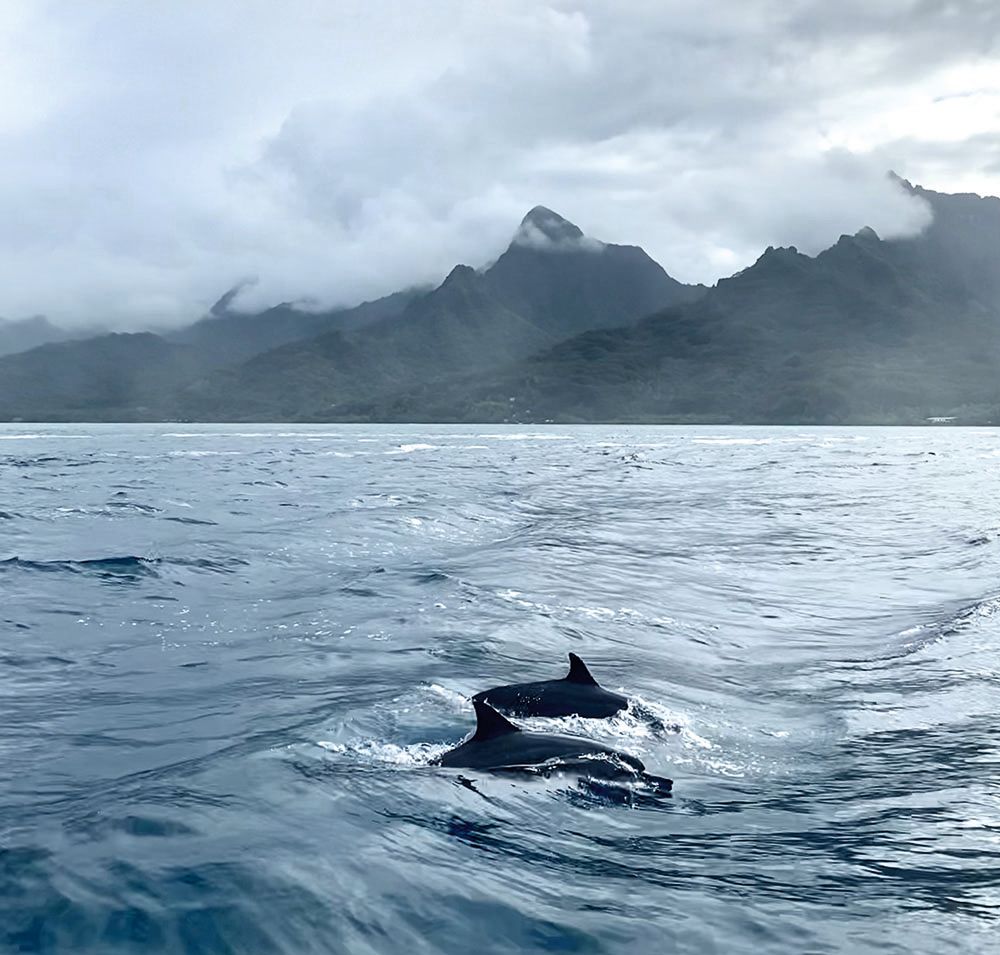EPIC ADVENTURE
Bounty, without the mutiny
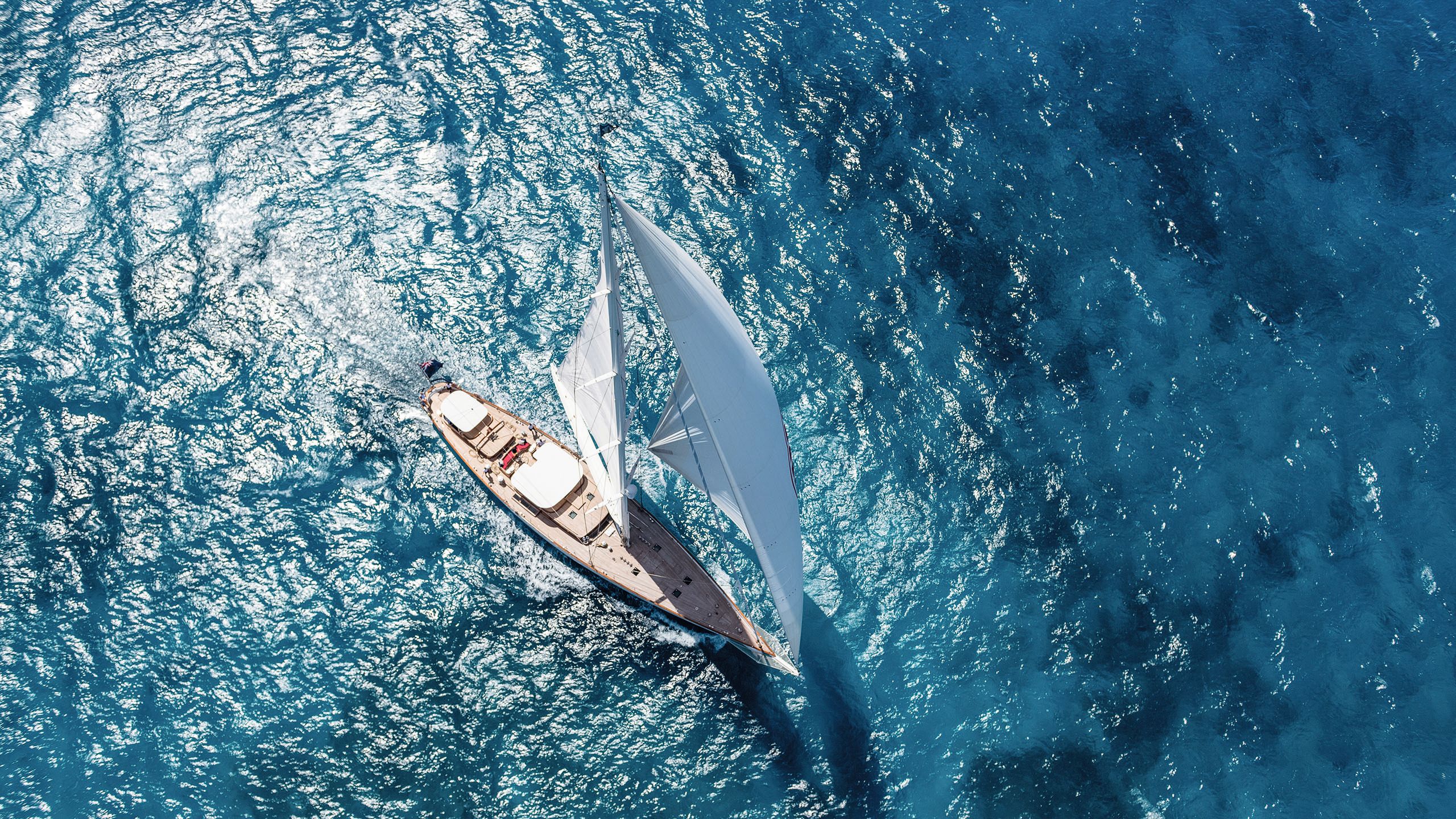
Every sailor dreams of sailing the South Seas, but for the owners of Vijonara, it means so much more, says Daniel Pembrey
COURTESY OF OWNER
Occasionally, a yachting voyage can provide those rarest of things: fulfilment of dreams; some of the most euphoric moments from any age. For Joerg and Ramona Wolle, it was the purest expression of freedom imaginable, which they hope will inspire others – even if “freedom” means different things to different sailors.
The Wolles’ experiences, growing up in the police state of communist East Germany, would prove decisive during their sailing “trip of a lifetime” to French Polynesia, between 2022 and 2023, on Vijonara – a 39-metre, classically styled beauty that Pendennis custom-built for them in Cornwall.
The destination was no accident. They had watched the 1962 epic Mutiny on the Bounty, which recounted a 1780s voyage from the English South Coast to Tahiti, starring Trevor Howard as the brutal Captain Bligh and Marlon Brando as the insouciant lead mutineer.
COURTESY OF OWNERVijonara in the South Seas
COURTESY OF OWNERVijonara in the South Seas
“I’m sure much could be read into the overthrowing of a tyrannical captain, as watched on an East German television set near the Bavarian border, tuned into western stations,” says Joerg. “Yet what struck us most, then, was the exoticism of the South Seas. The most exotic fruit we could find in our local grocery store was oranges, from Cuba – and only then at Christmas.”
The Wolles also devoured Bobby Schenk’s travelogue 80,000 miles and Cape Horn, which chronicles the round-the-world sailing trip that the West German author made between 1978 to 1982 on board his 17-metre sailing boat. Brilliant colour photos show Southern Pacific islands, which equally became anchored in the Wolles’ heads.
COURTESY OF OWNERRamona on the boat in 1985
COURTESY OF OWNERRamona on the boat in 1985
“We visited Moorea, Tahaa, Huahine and Bora Bora,” Joerg reads aloud from his original paperback copy of the book. “Steep mountains covered in a very dark and healthy green framing the incredible panorama, contrasting with the shimmering emerald-green waters of the lagoon...”
This depiction bears similarity to the Wolles’ current home, some way up the shores of Lake Zurich, in Switzerland. There, Joerg sighs, before closing the paperback as if it were an ancient book of spells, revealing: “At that point in our lives, sailing was our freedom. On a stretch of car park in Leipzig, surrounded by grey Trabant cars, we built our own nine-metre sailboat with a wooden mast. We’d sail it down the River Oder for days at a time, then out on to the Baltic Sea where we could only venture four kilometres from the heavily guarded coastline.”
He leans in closer towards me: “We could only dream of sailing to paradisical islands in the South Seas. They felt like a different planet.”
GETTY IMAGES
GETTY IMAGES
SILVER SCREEN COLLECTION - GETTY IMAGES
SILVER SCREEN COLLECTION - GETTY IMAGES
COURTESY OF OWNER
COURTESY OF OWNER
COURTESY OF OWNER
COURTESY OF OWNER
COURTESY OF OWNER
COURTESY OF OWNER
From cars to walls, East Germany was grey (top left); Marlon Brando as Christian Fletcher in Mutiny on the Bounty; the chartered jet pulverised by a vulture (top right). Building their first boat in a car park (bottom left); Bobby Schenk’s Kap Hoorn; crossing the Panama Canal at night (bottom right)
The Wolles daringly escaped from East Germany in the 1980s before the Berlin Wall fell. Four sailing boats and almost four decades later, the family – which now included daughter Victoria – was accomplished enough to make their dream trip a reality. Just like the (over deck) 37-metre HMS Bounty, Vijonara set sail during the European winter for Tahiti – so far away that “one couldn’t go farther without starting to come home”, as the narrator says at the start of the film.
Rather than travelling around treacherous Cape Horn, though, the Wolles passed through the Panama Canal, which held its own significance for Joerg. He’d worked his way up to become chairman of the largest sea freight and logistics company in the world.
“We could only dream of sailing to paradisical islands in the South Seas. They felt like a different planet”
The canal, completed in 1914 and considered one of the seven wonders of the modern world, handles 40 per cent of all US container traffic and five per cent of global maritime trade. Vijonara was dwarfed by ships laden with 13,000 containers, also by the gravity-operated locks, three of which raised her by 26 metres to a vast inland lake stretching almost the width of Panama, before three more locks lowered her back down on the Pacific side.
“The lock gates are huge,” says Joerg. “A hundred million litres of water flood them in just eight minutes. It’s truly a maelstrom; the whole boat is shaking.” Guiding her through these locks were four locomotives called mules that run on tracks beside the water channel, their steel cables tethered port and starboard, fore and aft. “While they guide you, you travel under your own power,” says Joerg. “It takes trust.”
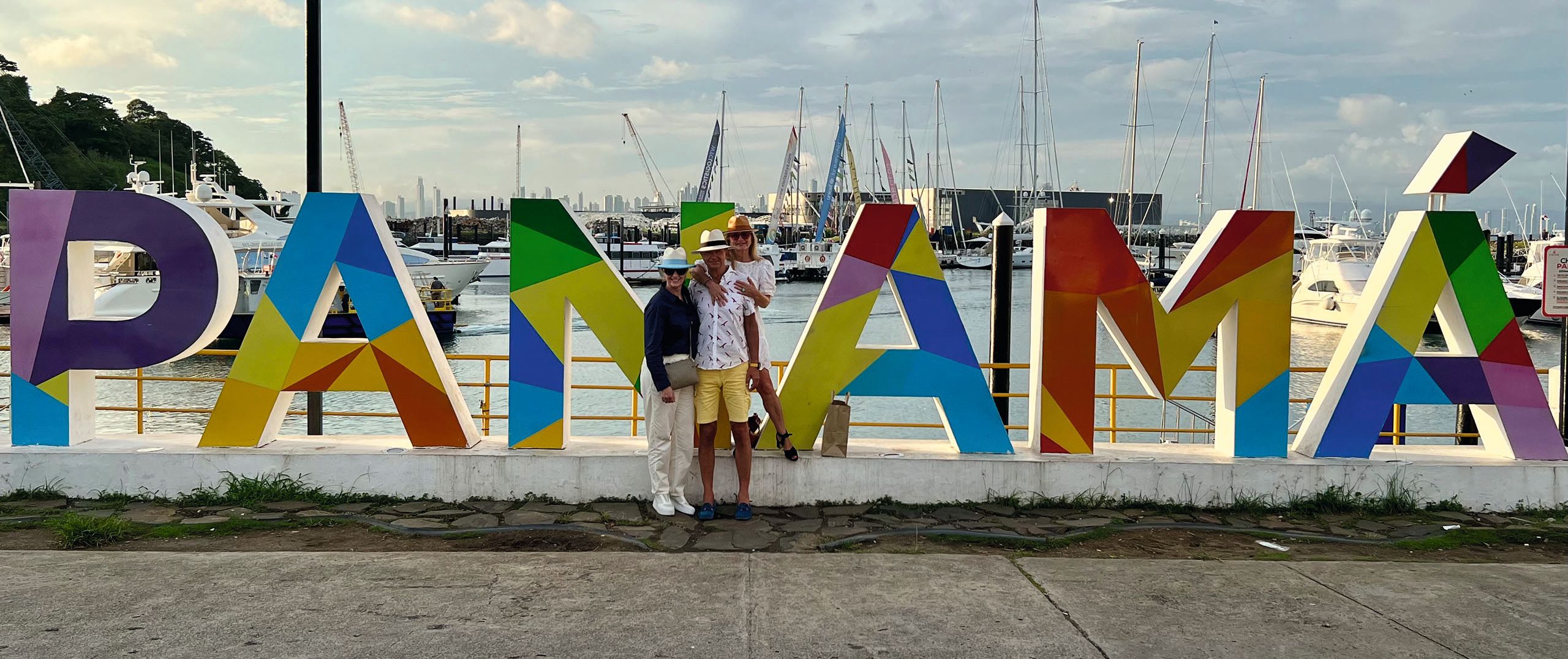
There’s something else in Joerg’s eyes, now: a wariness. “The light is eclipsed by the high walls of the locks,” he says. “It smells of aged, wet stone in there.” It makes one wonder about the East German prisons that conceivably awaited them had their bid for freedom failed. “Things can go wrong,” Joerg simply says, adding: “They did for Bobby Schenk, whose boat got hugely damaged in the canal.”
Next came the strangely serene sailing across artificial Lake Gatun, to the eerie low horn sounds of the container ships, before the Pacific-side return to sea level, completing this 82-kilometre journey within a journey. The Wolles then attempted to fly out to St Barths for the wedding of a yacht-owning friend, but a vulture crumpled the nose of their chartered jet soon after take-off, forcing an emergency landing.
ADOBE STOCK
ADOBE STOCK
“We appreciated a night in Panama City, taking in its colonial heritage,” says Ramona who, like Joerg, is a university-educated engineer. “We visited the fortified bastions that protected the place more or less successfully from pirates.”
They managed to hop on another jet the next day, making it to their friend’s wedding, but something had changed. They’d crossed over a psychological threshold, from the luxuries of Caribbean enclaves to the more primitive lure of the South Seas. “There was no turning back,” says Joerg, “yet in another sense, we were returning to something familiar from our earlier lives. We just didn’t understand what, yet.”
Silvery-dark surfaces the size of large swimming pools rose and crinkled then crumbled, lifting then dropping Vijonara with them. To the Pacific pitch and roll were added the salty-warm spindrift and ocean hues veering from deepest royal blue to darkest navy.
“Every real sailor’s dream is to explore the South Seas,” says Ramona, an electricity in her blue eyes: “Getting there, though, takes a lot of money and risk. It takes a true love of adventure. Few people actually make it there. You need to plan the trip in great detail, and you need to have trust in your boat and crew.”
Joerg agrees: “This raw world is so beguiling, when you’re on deck and the wind sound is symphonic, with the marine air filling your nostrils; you’re at one with the ocean. Yet the remoteness and danger of the Pacific are very real. You can be several weeks’ sailing from the nearest port or base of repair. Thankfully, this is balanced by the comforts and capabilities of the boat.”
COURTESY OF OWNER
COURTESY OF OWNER
“In a sense we were returning – to something familiar from our earlier lives. We just didn’t understand what, yet”
Most obviously, there is her size, more than twice that of the Wolles’ previous, uncrewed yacht. The hull is aluminium, from Bloemsma – “probably the best in Europe”, says Joerg. “Perhaps the greatest danger in the Pacific are the 12-metre containers that have slipped off those vast ships,” he warns. “These submerged containers are still buoyant. You don’t want to hit one of those at night in a carbon-fibre hull.”
Trees and other detritus imperilling the rudder were of sufficient concern that a skeg rudder had been fitted. “It is a more conservative approach than a spade rudder and it will enhance tracking,” says Dutch naval architect André Hoek. “It’s the right choice for a boat designed to sail around the world.”
COURTESY OF OWNER
COURTESY OF OWNER
Inside, the Wolles wanted for little in terms of luxuries, even relative to their Lake Zurich residence. The aft, two-level suite is entirely the owners’ domain, comfortably surpassing in spec the captain’s aft quarters on the Bounty. The upper level has an office with 270-degree views where Joerg can stay on top of global logistics and other business commitments. Vijonara was one of the first sailing yachts to adopt Starlink satellite-based internet connectivity.
The handsome leather desk showcases another first for her, as the only sailing yacht outfitted by Hermès, the illustrious Parisian atelier. This came from a chance encounter between Ramona and Axel de Beaufort, a Hermès design director, on a St Barths Bucket race. Small wonder Vijonara won not one but two BOAT International superyacht awards, for her styling and for best overall sailing yacht up to 40 metres in length.
COURTESY OF OWNERVijonara is the only sailing yacht to be outfitted by Hermès
COURTESY OF OWNERVijonara is the only sailing yacht to be outfitted by Hermès
Safety and functionality remain uppermost in their thoughts. The beautifully planked floor, allowing access to systems hidden in the bilge, are free of carpets and coverings. There are four weather-forecasting systems aboard. The bulwarks have been raised to increase deck safety, and then there are the sails – by any measure, a marvel.
While this sparred, rigged sloop pays homage to classic sailing vessels, staying on schedule during a month-long transpacific crossing requires pace, and the speed Vijonara attains can easily exceed 12 knots – perhaps twice that of the Bounty.
The upwind sail area is 910 square metres; downwind, 1,200 square metres (the Bounty, as recreated for the film, claimed a fully rigged area of 930 square metres). Winches and hydraulics flank the centrally located steering wheel pedestal, allowing her to sail with a smaller crew. The stainless-steel pedestal is a work of art in itself, with a vintage housing for the compass, visible through the spoked, woodenrimmed wheel.
COURTESY OF OWNERVijonara at anchor at Fiji’s Lau Islands
COURTESY OF OWNERVijonara at anchor at Fiji’s Lau Islands
One risk of being so far from port is any health concerns. Those in charge of the Bounty were necessarily young, such was the short life expectancy in the 1780s. Captain Bligh himself was in his mid-thirties. Bobby Schenk was in his late-thirties when he crossed the Pacific. The owners of Vijonara, now in their sixties, took reasonable precautions. Vijonara subscribed to a service that connects medical experts around the world by video link, but the owners’ greatest precaution lay in their choice of crew, notably the captain.
David Roberts is rather different from the tyrannical Captain Bligh. While physically resembling a Springbok rugby player (he’s South African) and having been up close and personal with danger (for example, held at gunpoint by pirates in Indonesia), he remains highly personable and possessed of a quality that Joerg has found to be surprising rare: common sense (“not as common as you’d think”).
COURTESY OF OWNERSailing between the Polynesian islands
COURTESY OF OWNERSailing between the Polynesian islands
David is also medically trained. His wife, Megan, is the soul of the boat, given her sunny disposition and skills as a chef. Joerg says: “When I was using the gym on board, I’d be motivated by the smell of lobster that David had spearfished. I’d imagine how good it would taste as lobster thermidor.”
Rounding out the crew were Celine, the stew, and Daniel, an engineer (both sailors). Joerg helmed the boat, obviating the need for a fifth member. “Growing up in East Germany, we learned to have a few trusted friendships,” Ramona says. “With this crew, we felt instinctively at home.”
“We faced a dozen or so warriors, built like a rugby team. Their hands were huge, their facial expressions impassive”
The most dramatic point of the trip was eventual landfall in Fiji. David had spent time in the South Seas and knew that, in order to sail in the coastal waters and anchor there, they’d need to obtain permission from the local chief. “The excitement of entering this vivid blue-and-green paradise was only heightened by arriving to see an American motor yacht ignoring this need for permission,” says Joerg.
“David called to them, warning them they needed to ask. I did wonder whether the system was a way of tricking yacht owners out of their money. Very quickly, two war canoes launched into the surf. The tattooed warriors on board were dressed in full battle gear, complete with masks and glinting arm shields, paddling furiously and bearing spears, clubs, bows and arrows. I’ve never seen anyone haul up an anchor as fast as those aboard that motor yacht.”
COURTESY OF OWNERThe island of Moorea
COURTESY OF OWNERThe island of Moorea
The Wolles cautiously made their way on to the unblemished, sugar-white beach. “We faced a dozen or so warriors,” says Ramona. “Joerg may be almost two metres tall and David might resemble a Springbok, but this was a rugby team. Their hands were huge; their facial expressions totally impassive.”
“It was unsettling,” concedes Joerg. “Some primitive part of the brain is on very high alert. Then, a curious thing happened: David cut the motor of the tender and somehow we all drew breath from this, relaxing just enough. My hearing had become very acute and I couldn’t detect anything other than natural sounds: no planes or engines in the background; only tropical birdsong, the boom and hiss of the surf and the curiosity of these people.”
Arriving women and children, dressed in bright colours, led the Wolles into a modest, airy community hall where tradition decreed that they drink kava – a bitter, tongue-numbing and hallucinogenic beverage highly prized in these parts. Once Joerg sipped from the chief ’s cup, the warriors stood down; cheering erupted and joyous singing and clapping ensued.
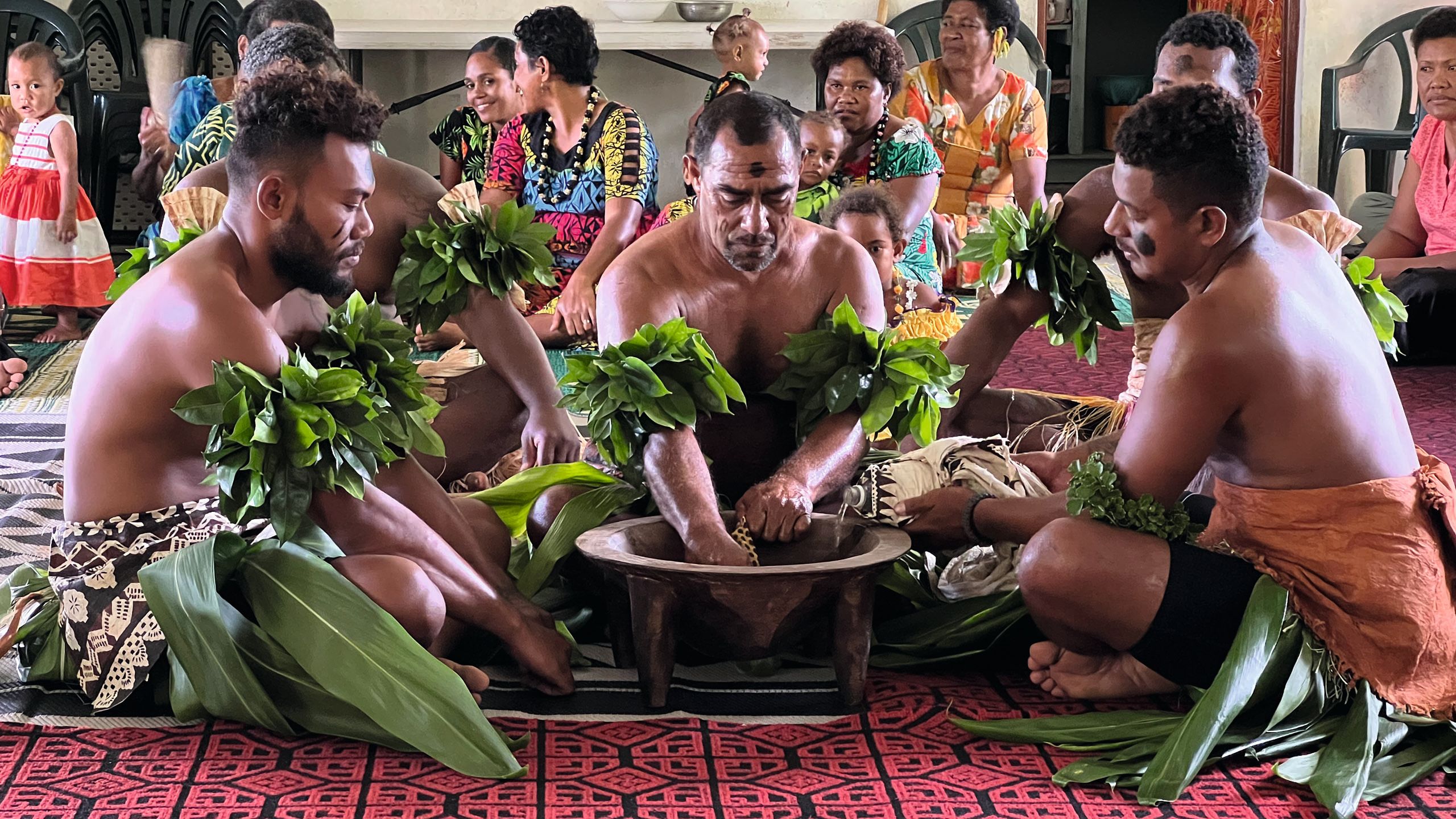
Elder ladies sat cross-legged in the front row, swathed in lime green and swaying from side to side as their co-ordinated hand gestures mimicked the waves and the welcoming coastal waters. “It was a timely reminder to stay open-minded,” says Ramona. “On arrival, we could have fled like the motor yacht, and we would have missed out on the friendliness and kindliness of these people, inviting us into their community to sing and dance with them. Although the kava drink did give me a thumping headache.”
It also gave her an idea: to trade kava for coconuts. “I hope you haven’t lost your bartering touch,” Joerg teased her, recalling earlier days when the local currency was also of limited use and East Germans exchanged goods directly among themselves.
Stocked with kava root, Vijonara sailed to a pristine bay that Bobby Schenk might have been describing: “Steep mountains covered in a very dark and healthy green framing the incredible panorama, contrasting with the shimmering emerald green waters of the lagoon...
COURTESY OF OWNERRamona samples the local drink, kava, in Fiji
COURTESY OF OWNERRamona samples the local drink, kava, in Fiji
Approaching the shore quietly by standup paddleboard, Ramona almost lost her balance, so startling was the visibility beneath. “The green-blue water was quite glassy and absolutely clear, for tens of metres down,” she recalls.
“Two lithe young men greeted me on the beach, each of them delighted by my cache of kava roots. Looking around, I took in the simplicity of it all – the absence of any other boats, cars, homes or visitors. When I looked back, the men had vanished. It took me a moment to realise that they were above me, up the skinny trunks of beachside coconut trees, with ropes tied between their feet; they’d climbed to the very tops.
“There, silhouetted against the sun, they used their machetes and balletic upper body movements to sever the fruit, letting the coconuts splash down in the lapping waters. Never has a drink tasted so thirst-quenching. I could literally feel the electrolytes, salts and minerals course through me.”
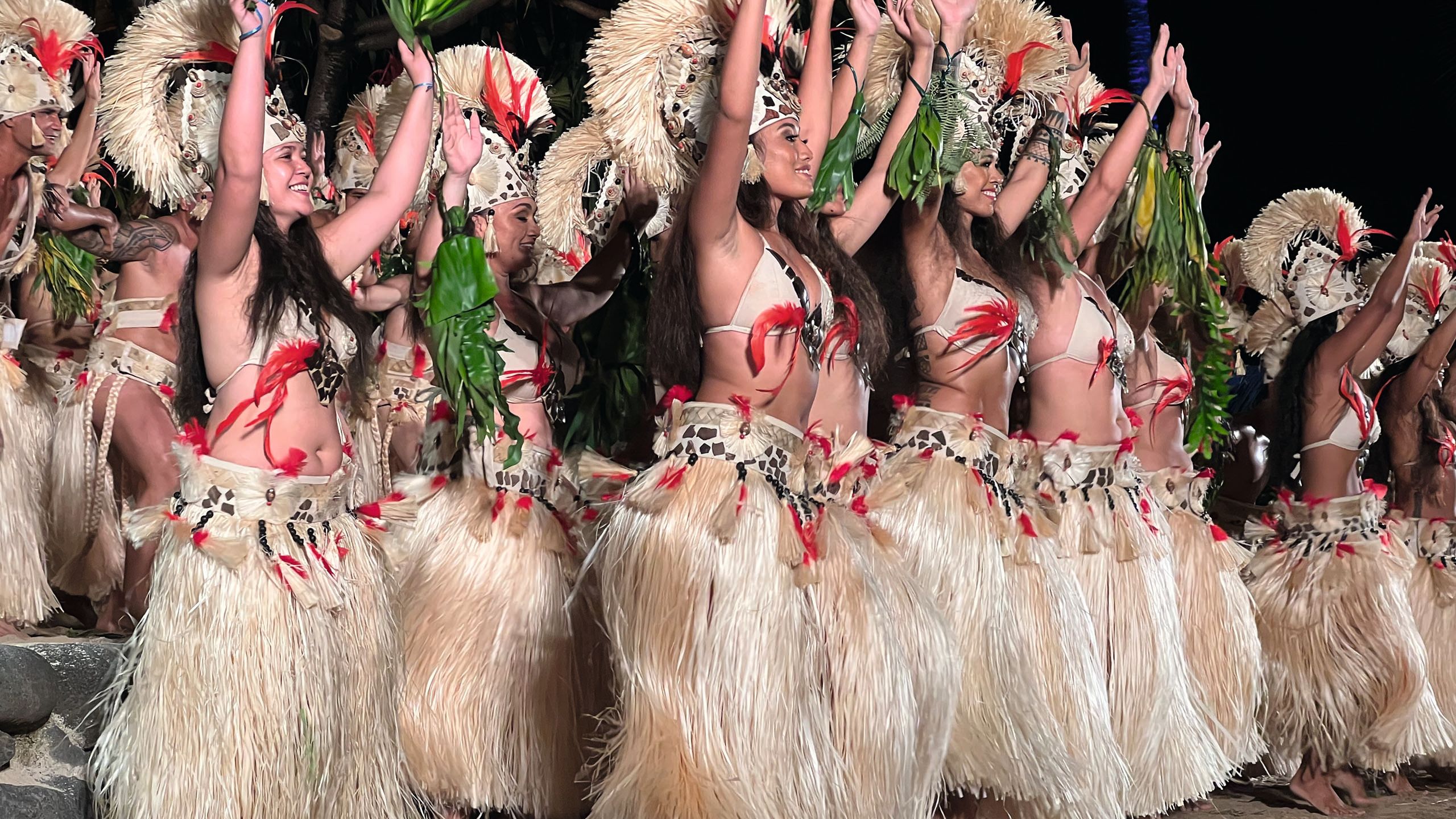
COURTESY OF OWNERThe Heiva dancers
COURTESY OF OWNERThe Heiva dancers
Balletic movement also featured in the Heiva dances that the Wolles sought out in Tahiti: an explosion of lit-up colour, shaking physiques, percussive sounds and kinetic energy. Groups of dancers from different French Polynesian islands competed on a main stage. The bright lights contrasted with the lowered house lights, but the Wolles could tell the rapt audience was predominantly local. The costumes – notably the tall headdresses – featured feathers, leaves and shells, all shimmering alluringly.
It was the young women’s hip-shaking movements (not unlike belly dancers) that had enraptured Brando’s character in the film. In real life, Brando went on to marry his co-star, Tarita Teriipaia, who is of French Polynesian descent. The women’s moves were similarly sensual at the event the Wolles attended, yet most striking was the inter-generational makeup of the dance groups and indeed the whole event, featuring as they did young children and grandparents alike, handing down their unwritten stories through dance, from one generation to the next.
“Escaping from East Germany meant cutting our roots,” says Ramona. “It was surprising and rewarding to experience this cultural continuity on the far side of the world.”
COURTESY OF OWNERRamona on a dive with giant mantas
COURTESY OF OWNERRamona on a dive with giant mantas
An equally immersive experience was their search for manta rays in Bora Bora. This quest included their daughter, Victoria, who’d flown out from Europe. She had grown up on and around the family’s various sailing boats as a true water lover. Manta rays can be hard to find; visitors can spend days searching for them only to see none.
Increasingly trustful of the locals, the Wolles put their faith in a giant of a local man known as the Manta Hunter. Their faith paid off in a shallow lagoon protected by reef, which formed a natural aquarium. Stingrays silently glided past Victoria’s submerged legs, brushing her “like velvet”. The Manta Hunter led Ramona into deeper water, where, looking beneath, she found “the sea bed had turned black, so many mantas were down there, some the width of cars”.
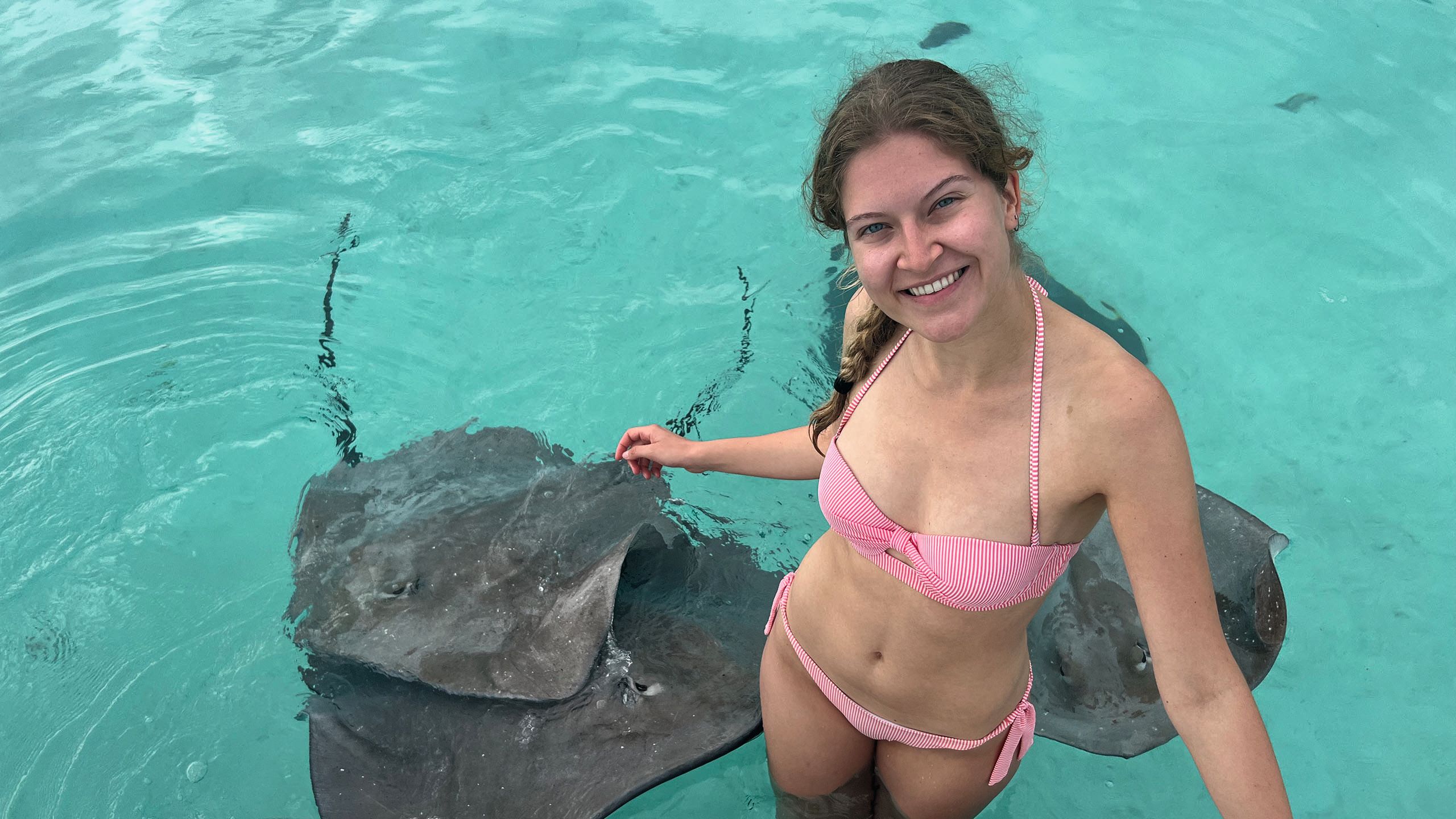
COURTESY OF OWNERVictoria Wolle swimming with stingrays
COURTESY OF OWNERVictoria Wolle swimming with stingrays
His hearing still very acute, Joerg was unexpectedly enchanted by circling reef sharks and more distant dolphins chattering with one another. “The water is not only crystal clear but also mineral rich and warm, wrapping you like a cocoon,” he says with child-like awe. In other sections of protected lagoon, they would spot whales and their babies, even hearing their sonorous breathing – a study in the precarious balance between freedom and security.
COURTESY OF OWNERDolphins play in the clear waters
COURTESY OF OWNERDolphins play in the clear waters
The Wolles took advantage of their proximity to New Zealand to book Vijonara into the Orams shipyard in Auckland for her fiveyear survey. A famous nearby road known as the “90-mile beach drive” provided hugely escapist fun during unusually stormy weather. They explored it in a four-wheel-drive car, doing doughnuts in drier sections of sand – and managing to avoid getting stuck in wetter reaches. “Boats are not the only things in which you need to watch out for the tides and currents,” says Ramona, laughing.
His hearing still very acute, Joerg was unexpectedly enchanted by circling reef sharks and more distant dolphins chattering with one another. “The water is not only crystal clear but also mineral rich and warm, wrapping you like a cocoon,” he says with child-like awe. In other sections of protected lagoon, they would spot whales and their babies, even hearing their sonorous breathing – a study in the precarious balance between freedom and security.
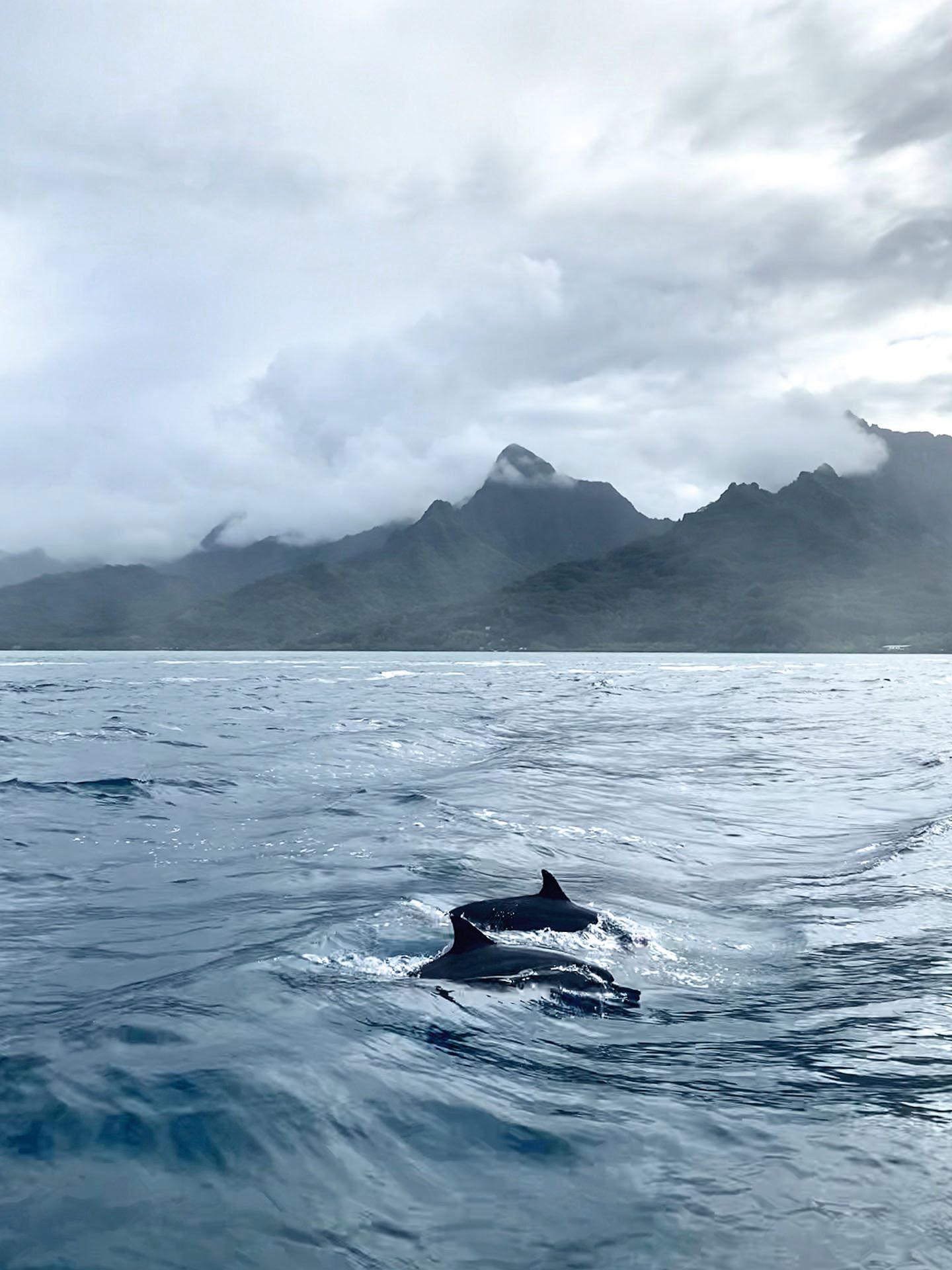
The Wolles took advantage of their proximity to New Zealand to book Vijonara into the Orams shipyard in Auckland for her fiveyear survey. A famous nearby road known as the “90-mile beach drive” provided hugely escapist fun during unusually stormy weather. They explored it in a four-wheel-drive car, doing doughnuts in drier sections of sand – and managing to avoid getting stuck in wetter reaches. “Boats are not the only things in which you need to watch out for the tides and currents,” says Ramona, laughing.
There would be many other moments, places and experiences; perhaps one day they’ll fill a book. “The key questions are which itinerary matters to each sailor, and what is the optimal time in life to make the trip,” concludes Joerg. “We were lucky in that we waited until we could make ours without limitations, yet without waiting too long. They say wine gets better with age, but the trick is knowing that the wine is there to be drunk, and enjoyed, and once it’s drunk, it’s gone. We couldn’t improve on the experiences we had.”
Perhaps it was inevitable that they would end up on Brando Island, for which the Tahitian government granted the actor a 99-lease in 1966. Brando died in 2004 and today the island is a remote, very luxurious eco-resort.
COURTESY OF OWNERJoerg at the helm in New Zealand’s Bay of Islands;
COURTESY OF OWNERJoerg at the helm in New Zealand’s Bay of Islands;
The fine-dining restaurant is an upturned replica Bounty hull and, as you enter this soulfully lit, wooden church of a space, an original colour poster of the movie greets you at the maitre-d’ stand. The Wolles celebrated the conclusion of the voyage with a first-growth Bordeaux.
Back in their air-conditioned beachside villa, to the sound of surf and the sizzle of insects, they settled in to rewatch the epic three-hour movie on a home cinema-sized television, thereby reliving large parts of their own journey. Perhaps they also had in mind the following words from Bobby Scheck’s book: “The paradise for a human being however doesn’t exist in French Polynesia nor anywhere else in the world for that matter. You need to bring it with you when you come to Moorea. It is the contentment within yourself.” It is a contentment the Wolles amply rediscovered in their South Seas.
First published in the October 2024 issue of BOAT International. Get this magazine sent straight to your door, or subscribe and never miss an issue.


